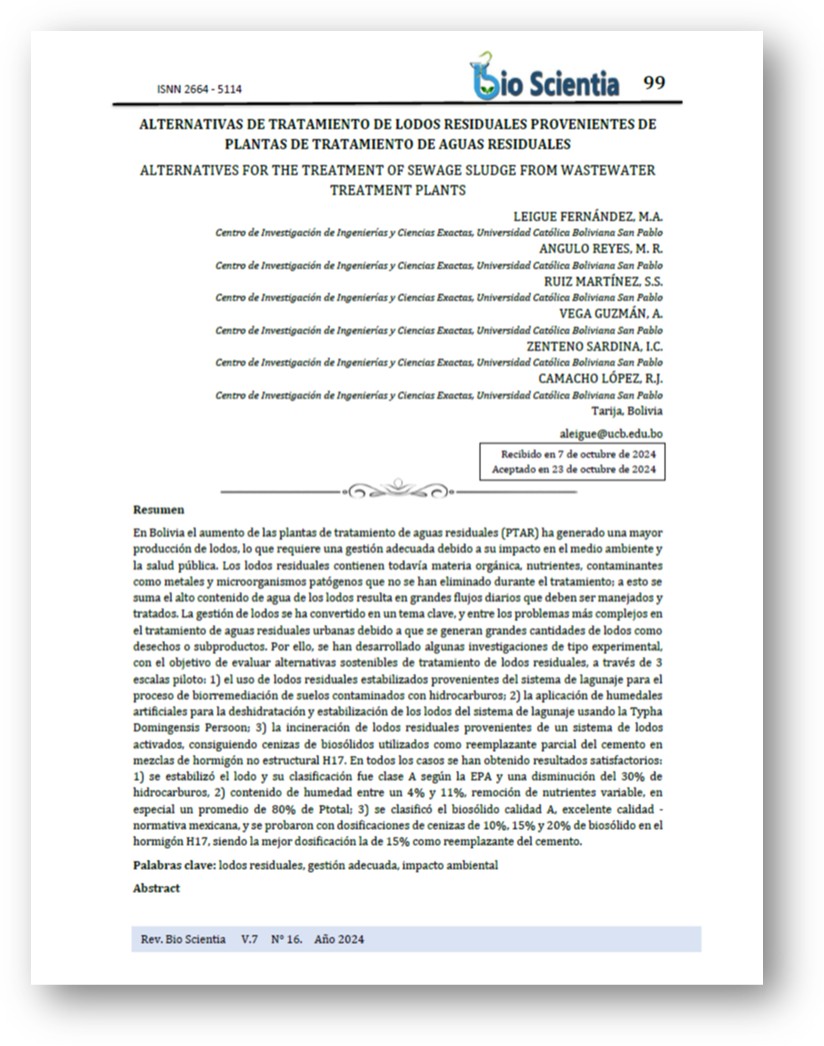ALTERNATIVES FOR THE TREATMENT OF SEWAGE SLUDGE FROM WASTEWATER TREATMENT PLANTS
Keywords:
sewage sludge, proper management, environmental impactAbstract
In Bolivia, the increase in wastewater treatment plants (WWTP) has led to greater sludge production, requiring proper management due to its impact on the environment and public health. Residual sludge still contains organic matter, nutrients, contaminants such as metals and pathogenic microorganisms that were not removed during treatment; this is compounded by the high water content in the sludge, resulting in large daily flows that must be managed and treated. Sludge management has become a key issue and one of the most complex challenges in urban wastewater treatment due to the large amounts of sludge generated as waste or byproducts. Therefore, some experimental research has been developed to evaluate sustainable alternatives for sludge treatment through three pilot scales: 1) the use of stabilized sludge from lagoon systems for the bioremediation of hydrocarbon-contaminated soils; 2) the application of artificial wetlands for the dewatering and stabilization of lagoon sludge using Typha Domingensis Persoon; 3) the incineration of residual sludge from an activated sludge system, producing biosolid ashes used as a partial replacement for cement in non-structural H17 concrete mixes. In all cases, satisfactory results were obtained: 1) the sludge was stabilized and classified as Class A according to the EPA, with a 30% reduction in hydrocarbons; 2) moisture content between 4% and 11%, with variable nutrient removal, particularly an average of 80% of total phosphorus; 3) the biosolid was classified as quality A (excellent under Mexican regulations), and ash dosages of 10%, 15%, and 20% were tested in H17 concrete, with 15% being the optimal replacement for cement.



